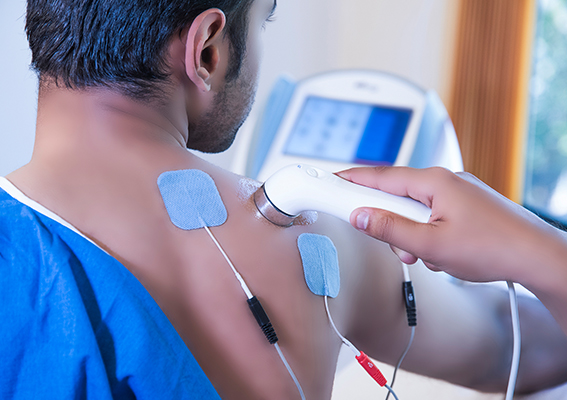Therapy Devices: Integrating Laser Technology for Enhanced Recovery
Therapy Devices: Integrating Laser Technology for Enhanced Recovery
Blog Article

Recovery from injury, surgery, or chronic conditions can be a protracted and challenging journey. While traditional therapies like physical therapy and rehabilitation exercises remain crucial, the integration of laser technology into therapy devices has revolutionized the field, offering enhanced recovery outcomes and improved patient experiences. This article explores the innovative ways laser technology is being incorporated into therapy devices and the benefits they provide for accelerated healing and functional restoration.
Laser therapy, also known as photobiomodulation (PBM) or low-level laser therapy (LLLT), employs specific wavelengths of light at low power to stimulate cellular activity and promote healing. Distinct from surgical lasers that cut or ablate tissue, therapeutic lasers interact with cells at a biochemical level, triggering a cascade of beneficial physiological responses. When integrated into therapy devices, these lasers offer a non-invasive and effective modality to accelerate healing, reduce pain, and improve function.
A key advantage of integrating laser technology into therapy devices is the ability to target specific tissues and conditions. Different wavelengths of light exhibit varying penetration depths and interact uniquely with tissue components. This allows for targeted treatment of both superficial and deep tissues, rendering it versatile for a broad spectrum of conditions. For instance, laser therapy can be employed to treat muscle strains, ligament sprains, tendonitis, arthritis, and neuropathic pain.
Laser therapy devices are engineered to be user-friendly and portable, enhancing accessibility for both clinicians and patients. They are available in various forms, encompassing handheld devices, wearable patches, and larger units designed for clinical settings. This portability facilitates convenient treatment in diverse environments, ranging from clinics and hospitals to homes and on-field sports therapy.
The integration of laser technology into therapy devices has catalyzed several advancements in rehabilitation and recovery:
Accelerated Tissue Healing: Laser therapy promotes tissue regeneration by stimulating the production of ATP, the cellular energy currency. This aids in accelerating the healing of injured muscles, ligaments, tendons, and bones.
Reduced Pain and Inflammation: Laser therapy modulates the inflammatory response, decreasing the production of pro-inflammatory cytokines and increasing the production of anti-inflammatory cytokines. It also stimulates the release of endorphins, the body's natural painkillers, providing effective pain relief.
Improved Blood Circulation: Laser therapy promotes vasodilation, augmenting blood flow to the treated area. This delivers essential nutrients and oxygen to damaged tissues, facilitating healing and reducing pain.
Enhanced Muscle Function: Laser therapy can improve muscle strength and endurance by stimulating muscle protein synthesis and reducing muscle fatigue. This is particularly advantageous for athletes and individuals recovering from muscle injuries.
Increased Range of Motion: By mitigating pain and inflammation, laser therapy can improve joint mobility and flexibility. This is crucial for individuals recovering from surgery or injury, as it helps to restore function and prevent stiffness.
The integration of laser technology into therapy devices is not only beneficial for patients but also for healthcare professionals. Laser therapy can complement other therapeutic modalities, such as manual therapy and exercise, enhancing the overall effectiveness of treatment plans. It can also reduce the reliance on pain medications, which often carry unwanted side effects.
While laser therapy is generally safe and well-tolerated, it is imperative to seek treatment from a qualified healthcare professional trained in its application. Proper assessment and treatment protocols are essential to ensure safe and effective outcomes. The dosage, frequency, and duration of treatment will vary depending on the individual's condition and response.
The future of therapy devices is inextricably linked to laser technology. Ongoing research is exploring novel applications of laser therapy and developing more advanced devices with enhanced features. We can anticipate further innovations in laser technology, such as the development of multi-wavelength lasers and targeted drug delivery systems.
Therapy devices integrating laser technology are transforming the landscape of rehabilitation and recovery. By offering a non-invasive, effective, and convenient method to accelerate healing, reduce pain, and improve function, these devices are empowering individuals to regain their quality of life and achieve optimal recovery outcomes. As technology continues to advance, we can expect laser therapy to play an even greater role in the future of healthcare, offering hope and healing to those in need.